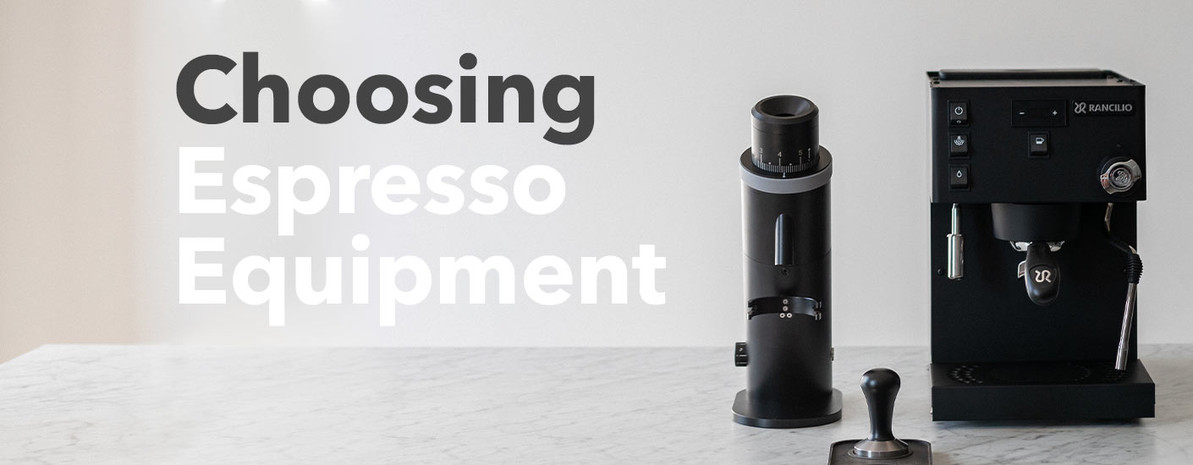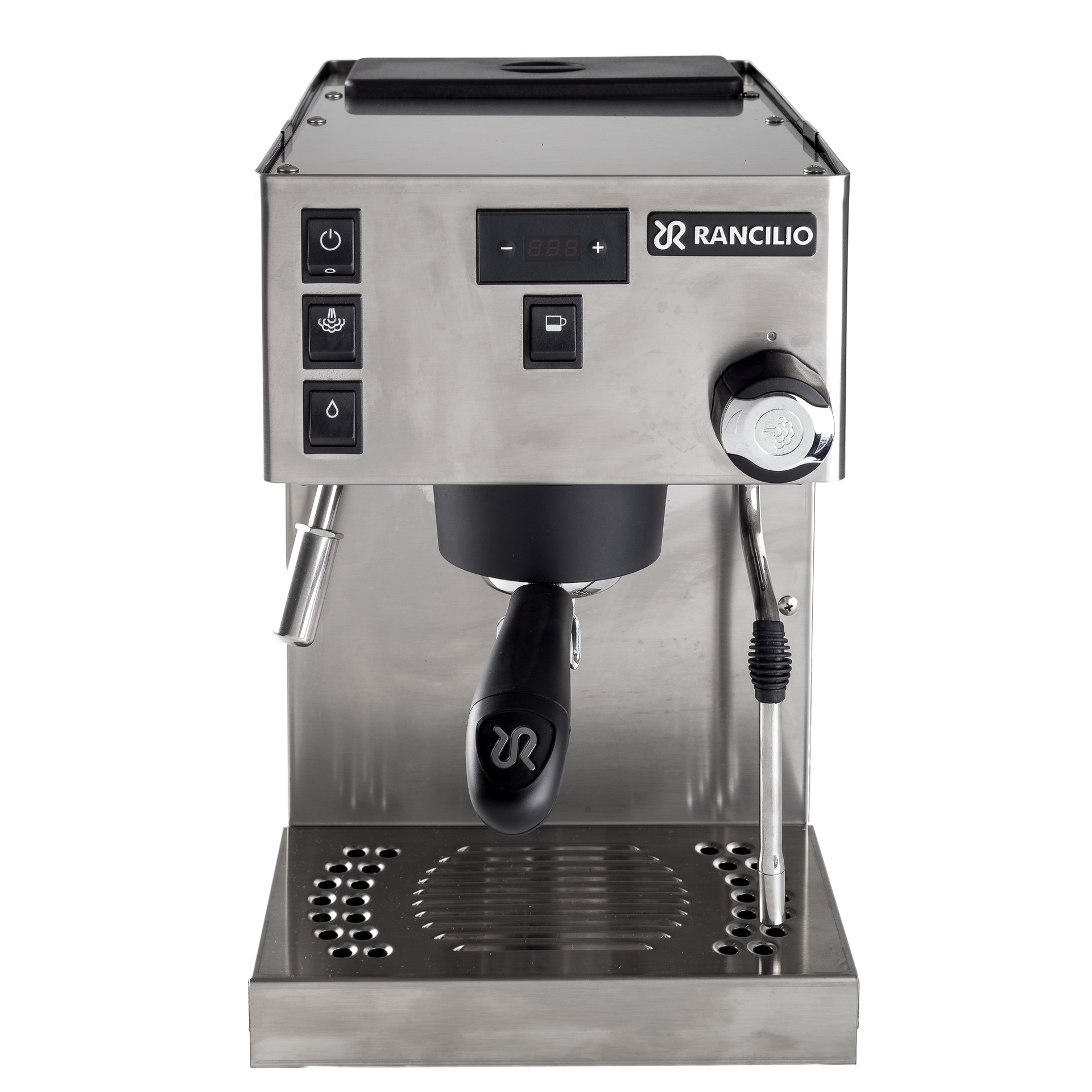Choosing Espresso Equipment
Welcome to the next phase of your espresso journey. You have tasted sweet, balanced espresso at a café. You have looked at the demitasse, then at the barista, and you have said (to yourself, surely), "Hmm, I can do this." You are not wrong (unlike the time you had this same thought halfway through an exhibition of Dubuffet paintings). This (tasty espresso) you can do. It will take the right equipment and it will take time, but success is well within your reach. And you have come to the right place. We at Prima Coffee pride ourselves on curating the finest selection of espresso machines and grinders, in addition to all sorts of other coffee and espresso gear, for the home barista, beginner and expert alike. If you are ready to buy your first machine, or to upgrade from the dinosaur on the kitchen counter, then read on, friend. We have written a quick-and-easy guide, organized by skill level (current or aspirational), to get you started on the long, thankless (yet delicious), pleasingly arduous path toward the perfect espresso.
Choosing an Espresso Machine
-
Beginner
The Cafelat Robot was created by espresso machine collector, historian, and longtime La Marzocco technician Paul Pratt. Completely plastic free and winsome to boot, the Robot features an aluminum body and base and a stainless steel basket, 57.5mm portafilter, and dispersion screen. Like the lever machines on which it was based, the Robot is capable of achieving commercial-grade espresso pressure and temperature control at a fraction the cost of electric machines. Want to make cappuccinos and lattes? No problem. The Bellman Steamer, which is capable of producing that silky sweet steamed milk, is the perfect companion for the espresso-only Robot.
-
Intermediate
With the Anna, Lelit has managed to fit a premium espresso machine into a compact and affordable package. The catch is that the dimensions and parts are a little smaller than those found on pricer machines. The grouphead, for instance, is 57mm, as opposed to the standard 58mm; and the boiler, which houses the water for both brewing and steaming, holds a mere 250ml (or about 8oz.). But no matter. The boiler has a high-wattage heating element, so it is quick to heat incoming water and moves from brewing to steaming temperature in less than a minute; and the shell holds an enormous 2.7-liter water reservoir to feed the boiler for drink after drink without a refill.
-
Advanced
The Silvia Pro is Rancilio’s more robust version of its flagship machine, the Silvia, which was released over twenty years ago and is still kicking. Boasting such upgrades as dual boilers, dual PIDs, brew and steam temperature control, a shot timer, and several functions like automatic backflush and programmable on and off times, the Pro checks all the boxes for a high-end machine without too many add-ons to drive up the price. In addition to classic silver, Prima offers the Silvia Pro with custom powder coat options.
-
Other Options
Do you want to take your espresso on the road? Check out the Flair Pro 2.
Does your kitchen have a vintage vibe? Check out the La Pavoni Europiccola Lever Espresso Machine.
Do you want a commercial machine in a compact package? Check out the Linea Mini from La Marzocco.
Choosing an Espresso Grinder
-
Beginner
Perhaps the perfect companion to the Robot because of its mid-century design, the G1 Plus from Timemore features 38mm titanium-coated conical steel burrs, dual bearings, and Timemore’s E&B (espresso and brewing) burrs that were specially engineered to grind from fluffy espresso powder to French Press boulders with equal efficiency and effectiveness. The premium materials include stainless steel, aluminum, and walnut, with no plastic in sight. The G1 Plus comes with a brush and canvas bag to keep it clean and scratch-free at home or on the road. All in all, the G1 is a beautiful manual espresso grinder with an entry-level price.
-
Intermediate
The Sette 270Wi is a step up from the Lido in terms of speed: its lightning-quick motor helps the 40mm Etzinger burrs pulverize coffee at a pace of 4g/second, which is better than some grinders double its size, with little to no retention. In addition, the Sette has an intelligent grind-by-weight technology that weighs grinds directly into a portafilter or included grinds bin and learns over time how to prevent grinding too much or too little for each of the three programmable doses. The Sette’s stepless micro-adjustment wheel was designed for espresso, but the 270 settings, some of which reach into the coarse drip range, allow for other brewing methods, too.
-
Advanced
The Lagom P64 from Option-O sports the same shape (flat) and size (64mm) burrs as some Mazzers but in a more contemporary package. Unlike the other grinders on this list, it comes standard with either high-uniformity burrs for traditional espresso or unimodal burrs for brewing and light roast espresso, both of which have been designed by SSP and coated with a Red Speed (Titanium Aluminum Carbon Nitride) to increase lifespan and durability. These burrs should last for about 10,000 pounds (conservatively over 300,000 cups) of coffee, which is to say they will last forever. Other features include a quiet variable RPM (200-1400) motor, near-zero retention, and accessories for grinds distribution, static reduction, and dosing.
-
Other Options
Do you want to take your grinder on the go? Check out the Timemore NANO.
Do you want a built-in scale? Check out the Baratza Vario W.
Do you want commercial grinding speed? Check out the Mahlkonig E65S.
Now that you have a machine and grinder, you are all set, right? Not quite. Espresso isn't just about equipment; it's about learning, too. It is a life-long quest that we may never master, yet we will wake up every day with a renewed spirit, with more confidence, and with visions of the perfect, improbably high extraction. We may get there, comrade, beleaguered and half-broken, palates ajar, but only with a combination of trial, error, and knowledge. Head on over to this page to find resources, workshops, and more equipment that will bring you closer to the summit.









